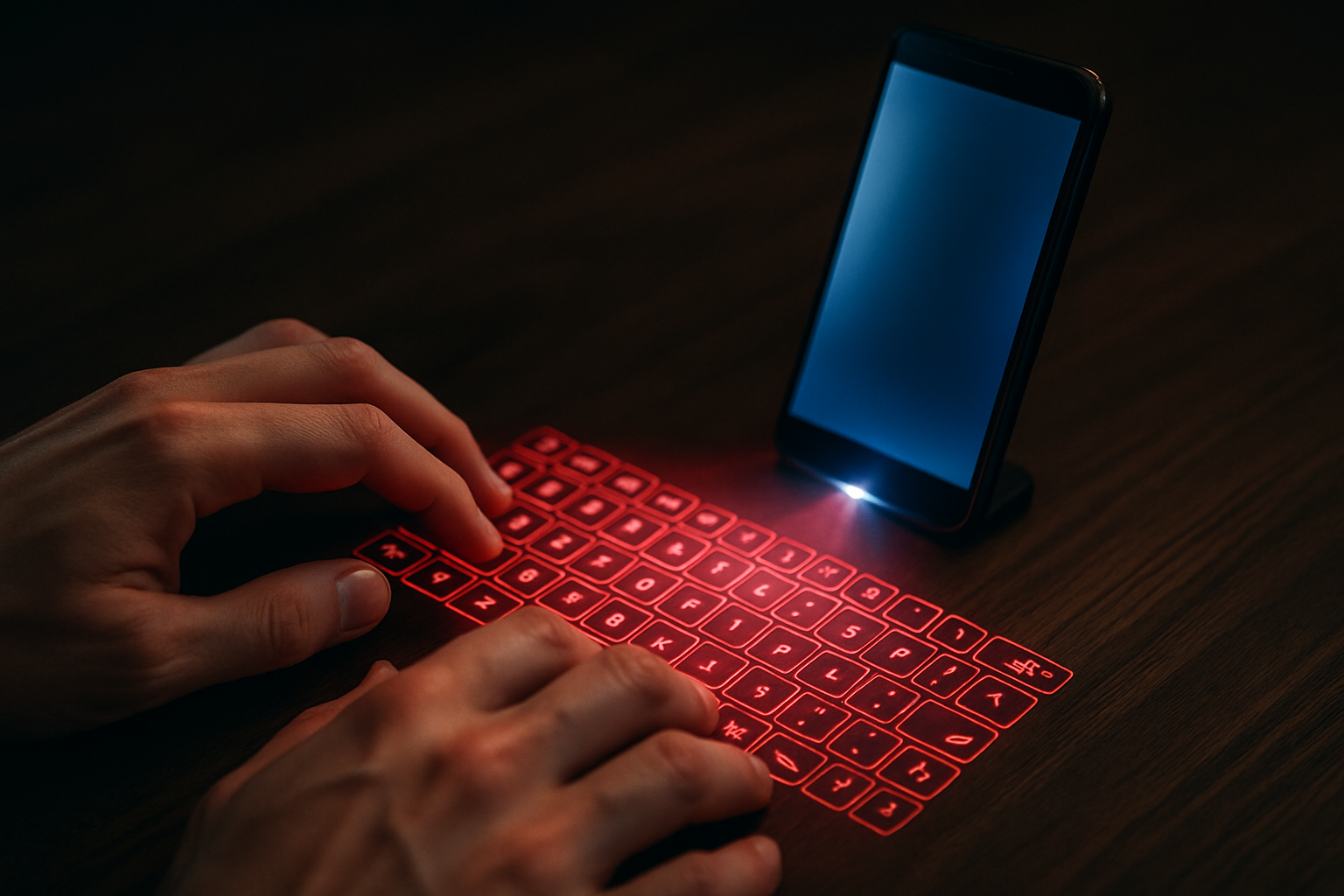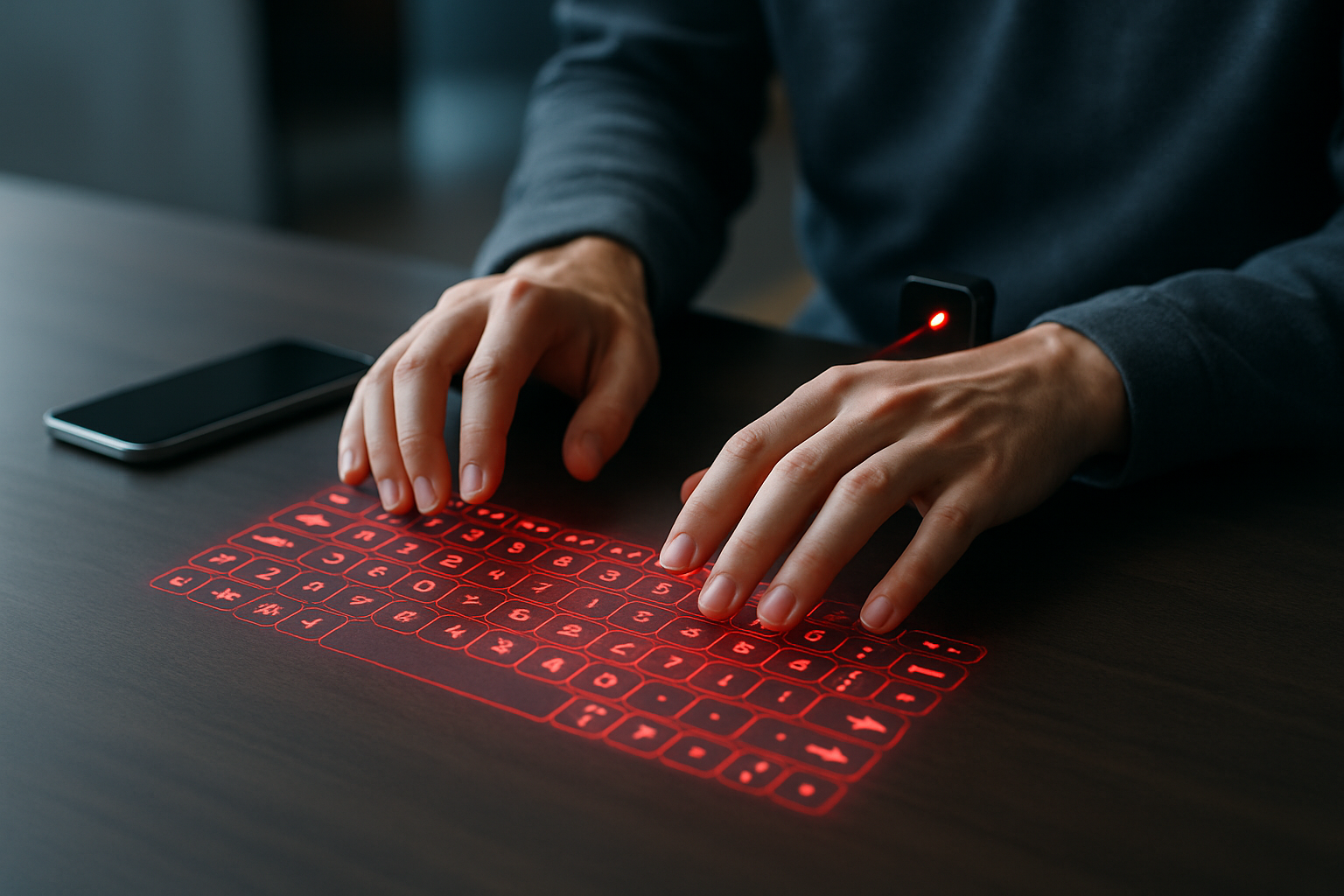Holographic Keyboards: The Next Frontier in Mobile Input
In an era where our smartphones are getting thinner and more powerful, one aspect has remained largely unchanged: the way we input text. Physical keyboards have long been replaced by touchscreens, but what if we could type on thin air? Welcome to the world of holographic keyboards, a technology that's poised to revolutionize how we interact with our mobile devices.

How Holographic Keyboards Work
At the heart of holographic keyboard technology lies a clever combination of optics and sensors. A tiny projector beams out the image of a keyboard onto a surface, while infrared sensors track the movement of your fingers. As you “press” these virtual keys, the system interprets your movements as keystrokes, translating them into text on your device.
The Evolution of Mobile Input
To appreciate the potential impact of holographic keyboards, it’s worth looking back at the evolution of mobile input methods. From the T9 predictive text on Nokia phones to the revolutionary touchscreen of the iPhone, each step has brought us closer to more efficient and intuitive ways of communicating through our devices. Holographic keyboards represent the next logical step in this progression, offering the tactile feedback of physical keys with the flexibility of software-based solutions.
Overcoming Technical Hurdles
While the concept of holographic keyboards is enticing, bringing them to market has proven challenging. Early prototypes suffered from lag and accuracy issues, making them impractical for real-world use. However, recent advancements in projection technology and machine learning algorithms have significantly improved responsiveness and accuracy. Companies are now working on solutions that can adapt to different lighting conditions and surface textures, making holographic keyboards viable in various environments.
The Potential Market Impact
As holographic keyboard technology matures, it could reshape the mobile accessory market. With an estimated price range of $100 to $300 for early consumer models, these devices could become a must-have for mobile professionals and tech enthusiasts alike. Industry analysts predict that the global market for advanced input devices, including holographic keyboards, could reach $1.5 billion by 2025.
Privacy and Security Considerations
One of the often-overlooked aspects of holographic keyboards is their potential impact on privacy and security. Unlike traditional keyboards, which leave no physical trace, holographic systems project sensitive information into the environment. Manufacturers are exploring ways to address this, including directional projection technology that limits viewing angles and encryption methods for the projected data.
The Future of Human-Computer Interaction
Holographic keyboards are just the beginning. The technology behind these devices could pave the way for more advanced forms of spatial computing. Imagine manipulating 3D objects in mid-air or controlling smart home devices with gestures. As we move towards more immersive computing experiences, the lines between physical and digital interfaces will continue to blur.
Challenges in Adoption
Despite the exciting possibilities, holographic keyboards face several hurdles to widespread adoption. Battery life remains a concern, as projection systems can be power-hungry. Additionally, user adaptation may take time, as people accustomed to physical or touchscreen keyboards adjust to typing on projected light. However, proponents argue that the benefits in terms of portability and flexibility will outweigh these initial challenges.
A Glimpse into the Near Future
As holographic keyboard technology continues to evolve, we can expect to see early commercial products hit the market within the next two to three years. These devices will likely start as accessories for smartphones and tablets before potentially being integrated directly into mobile devices. The race is on among tech giants and startups alike to perfect this technology and bring it to consumers.
In conclusion, holographic keyboards represent a fascinating convergence of optics, sensors, and software that could transform how we interact with our devices. While challenges remain, the potential for a more flexible, portable, and immersive typing experience is tantalizing. As we stand on the brink of this new input revolution, one thing is clear: the future of mobile technology is looking increasingly holographic.





